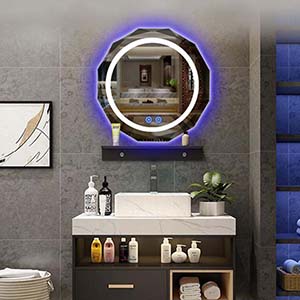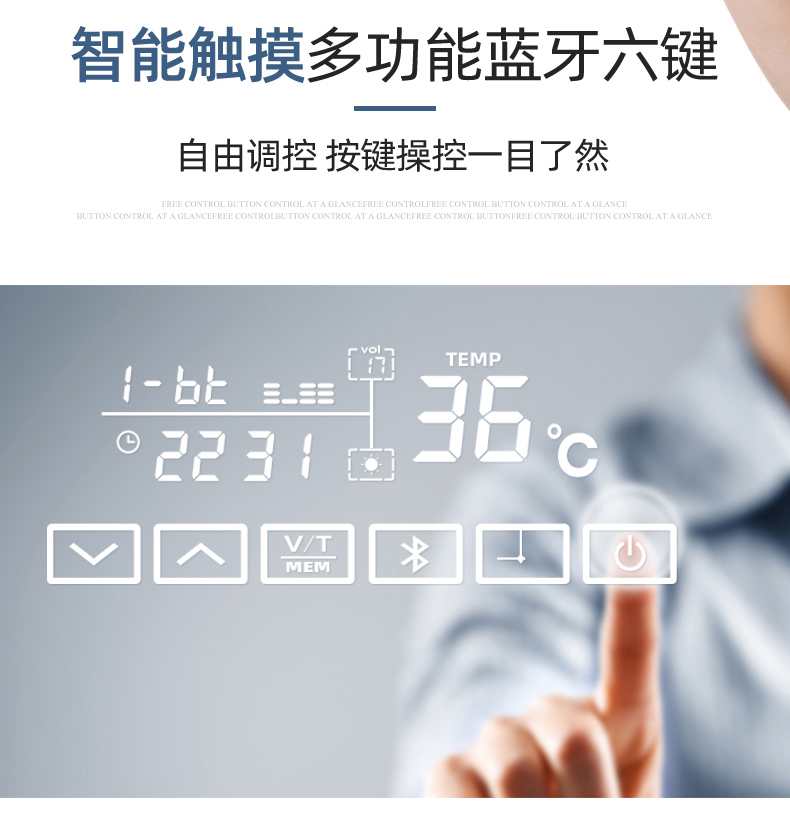Introduction to Smart Mirrors: Definition and Functionality
In recent years, smart mirrors have emerged as a cutting-edge technology that combines traditional reflective surfaces with advanced digital functionalities. These innovative devices are transforming various aspects of daily life, from personal grooming to home automation and healthcare. This article delves into the definition of smart mirrors, explores their core functionalities, and examines their applications and benefits.
What is a Smart Mirror?
A smart mirror is a two-way mirror with a digital display embedded behind it. When the display is off, the device functions like a regular mirror. However, when the display is activated, it can show a range of information, such as time, weather, calendar events, news updates, and more. The integration of touch screen capabilities, voice control, and other interactive features allows users to interact with the mirror in various ways [5].
Core Functionalities
Smart mirrors offer a variety of functionalities that enhance convenience and interactivity. Key features include:
Interactive Display: The embedded display can show a wide array of information and media. This includes real-time updates on weather, traffic, news, and social media feeds. The display can be customized according to the user’s preferences.
Touch Screen and Voice Control: Many smart mirrors are equipped with touch screen interfaces and voice recognition technology, allowing users to control the mirror and access information hands-free. This functionality is particularly useful in environments like bathrooms and kitchens.
In-Built Defogging and Lighting: Smart mirrors often come with built-in defogging capabilities, ensuring a clear reflection even in steamy conditions. Integrated LED lighting provides optimal illumination for tasks such as makeup application and shaving [1].
Health Monitoring: Advanced smart mirrors can monitor health metrics such as heart rate, body temperature, and body composition. Some models are equipped with cameras and sensors to analyze skin conditions and suggest skincare routines [6].
Home Automation Integration: Smart mirrors can serve as control hubs for smart home devices. Users can manage lighting, temperature, security systems, and other connected devices directly from the mirror’s interface.
Applications of Smart Mirrors
Personal Use
Grooming and Beauty: Smart mirrors enhance daily grooming routines by providing optimal lighting and real-time information. Some models offer augmented reality (AR) features, allowing users to try on virtual makeup or hairstyles before applying them in real life.
Fitness and Health: Health-focused smart mirrors track fitness metrics, guide workout routines, and provide feedback on performance. They can also connect to wearable fitness devices to offer comprehensive health insights.
Commercial Use
Retail: In retail environments, smart mirrors offer virtual fitting rooms where customers can see how clothes look without physically trying them on. This technology improves customer experience and reduces return rates.
Hospitality: Hotels and resorts utilize smart mirrors to provide guests with personalized information about services, local attractions, and events. They can also serve as interactive concierge systems.

Healthcare
Telemedicine: Smart mirrors equipped with cameras and health monitoring sensors enable telemedicine consultations. Patients can communicate with healthcare providers and receive medical advice from the comfort of their homes.
Elderly Care: For elderly individuals, smart mirrors can offer reminders for medication, monitor vital signs, and provide emergency alerts to caregivers [6].
Benefits of Smart Mirrors
Convenience: Smart mirrors streamline daily routines by providing easy access to information and integrating multiple functions into one device. Users can check the weather, catch up on news, and manage their schedule while getting ready in the morning.
Health and Wellness: With integrated health monitoring features, smart mirrors help users keep track of their fitness and health goals. The ability to analyze skin conditions and body metrics encourages proactive health management.
Energy Efficiency: By integrating with smart home systems, smart mirrors can contribute to energy efficiency. Users can control lighting, heating, and cooling systems more effectively, reducing energy consumption.
Enhanced User Experience: The interactive and customizable nature of smart mirrors offers a personalized user experience. Whether used for grooming, fitness, or entertainment, these devices cater to individual preferences and needs.
Innovative Home Decor: Beyond functionality, smart mirrors add a modern and high-tech aesthetic to home interiors. Their sleek design and advanced features make them a desirable addition to contemporary living spaces [4].
Challenges and Considerations
While smart mirrors offer numerous benefits, there are challenges and considerations to keep in mind:
Cost: Smart mirrors are generally more expensive than traditional mirrors due to the advanced technology and features they incorporate. This can be a barrier for some consumers.
Privacy: With built-in cameras and sensors, privacy concerns may arise. It is essential for manufacturers to ensure robust data security measures and for users to be aware of privacy settings.
Technical Issues: Like any electronic device, smart mirrors can encounter technical problems such as software glitches or hardware malfunctions. Regular maintenance and updates are necessary to ensure optimal performance.
User Adaptation: For individuals unfamiliar with smart technology, adapting to the functionalities of a smart mirror may take time. User-friendly interfaces and comprehensive user guides can help ease this transition [2].
Conclusion
Smart mirrors represent a significant advancement in both home technology and personal care. By combining the reflective properties of traditional mirrors with the capabilities of digital displays and smart technology, these devices offer enhanced convenience, interactivity, and functionality. From personal grooming and health monitoring to home automation and commercial applications, the potential uses for smart mirrors are vast and varied. As technology continues to evolve, smart mirrors are likely to become even more integrated into daily life, offering new features and greater ease of use.
Future Outlook
Looking ahead, the development of smart mirrors will likely focus on enhancing their integration with other smart devices and expanding their capabilities. Innovations in artificial intelligence (AI) and the Internet of Things (IoT) will drive this evolution, making smart mirrors even more intuitive and multifunctional. As the technology becomes more accessible and affordable, we can expect smart mirrors to become a standard feature in modern homes and businesses, revolutionizing the way we interact with our surroundings.
 English
English Russian
Russian




